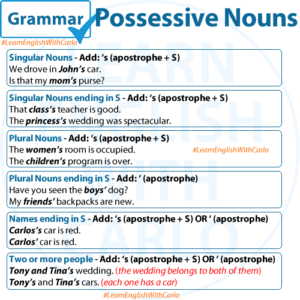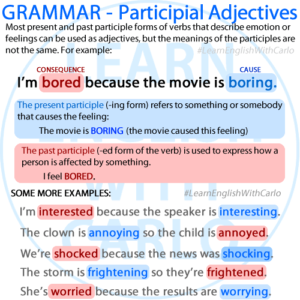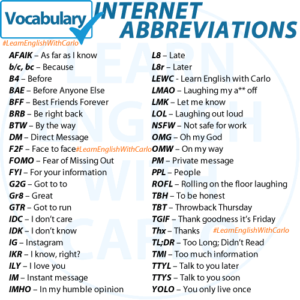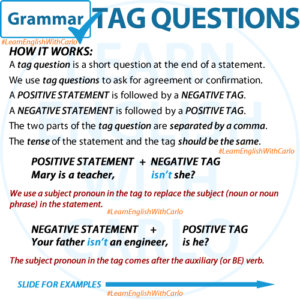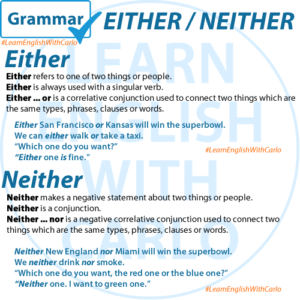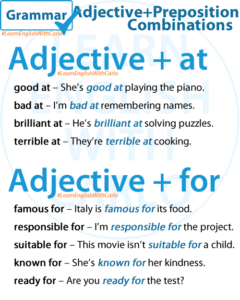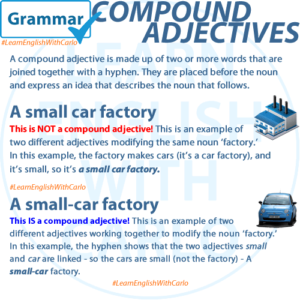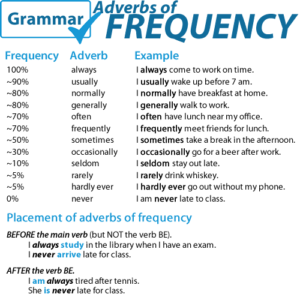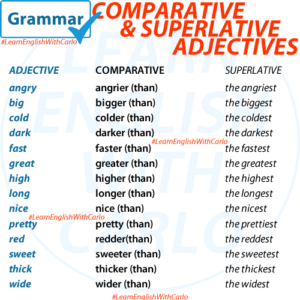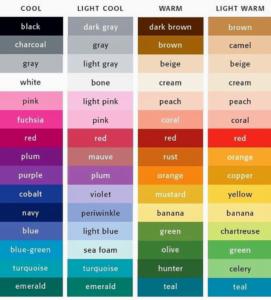Possessive nouns can seem tricky at first, but once you grasp the rules, you’ll find them easy to use. In this post, we’ll explore how to form possessive nouns in different contexts, ensuring that you can confidently show ownership in your writing. 1. Singular Nouns For most singular nouns, showing possession is straightforward. Simply add …
Category: INSTAGRAM
Images I've posted to Instagram
Permanent link to this article: https://englishyourway.com.br/mastering-possessive-nouns-in-english/
Oct 24
Understanding Participial Adjectives:
The Difference Between -ed and -ing Forms In English, many verbs that describe emotions or feelings can be transformed into adjectives by using their present or past participle forms. However, it’s important to note that these two forms convey different meanings. Let’s explore how to use these participial adjectives correctly. Present Participle (-ing Form) The …
Permanent link to this article: https://englishyourway.com.br/participial-adjectives-in-english/
Oct 23
VOCABULARY – Internet Abbreviations (with definitions)
Common Internet Abbreviations in Everyday Use With the rise of online communication, abbreviations have become a fast and convenient way to convey messages. Here are some common internet abbreviations you might come across: How Abbreviations Change the Way We Communicate Internet abbreviations not only save time but also add a casual tone to conversations. They …
Permanent link to this article: https://englishyourway.com.br/vocabulary-internet-abbreviations-with-definitions/
Oct 21
GRAMMAR – Tag Questions
A tag question is a short question added to the end of a statement. They are used to confirm information, seek agreement, or invite a response from the listener. Tag questions are characterized by their structure: they typically consist of an auxiliary verb and a pronoun that matches the subject of the statement. For example: …
Permanent link to this article: https://englishyourway.com.br/grammar-tag-questions/
Oct 19
GRAMMAR – Either & Neither
GRAMMAR – Either & Neither Either refers to one of two things or people. Either is always used with a singular verb. Either … or is a correlative conjunction used to connect two things which are the same types, phrases, clauses or words. Neither makes a negative statement about two things or people. Neither …
Permanent link to this article: https://englishyourway.com.br/grammar-either-neither/
Oct 18
Adjective + Preposition Combinations
Mastering adjective + preposition combinations is an important step toward sounding natural and confident in English. These expressions—like interested in, good at, or afraid of—are common in everyday conversation, but they don’t always follow clear rules. That’s why it helps to learn them in groups. Below, you’ll find examples organized by preposition to help you …
Permanent link to this article: https://englishyourway.com.br/adjective-preposition-combinations/
Oct 15
Compound Adjectives
Understanding Compound Adjectives in English Compound adjectives are a fascinating aspect of English grammar that allow us to express detailed ideas about nouns in a concise and efficient way. As the name suggests, a compound adjective is made up of two or more words that work together as a single unit to describe a noun. …
Permanent link to this article: https://englishyourway.com.br/compound-adjectives-examples-and-rules/
Oct 14
GRAMMAR – Adverbs of frequency
Adverbs of frequency describe how often something occurs 100% – always – I always come to work on time.~90% – usually – I usually wake up before 7 am.~80% – normally – I normally have breakfast at home.~80% – generally – I generally walk to work.~70% – often – I often have lunch near my …
Permanent link to this article: https://englishyourway.com.br/grammar-adverbs-of-frequency/
Oct 11
GRAMMAR – Comparatives & Superlatives
Comparative and superlative adjectives are essential tools in English grammar for comparing and expressing degrees of qualities or characteristics. This post will clarify these concepts with clear definitions, examples, and practical applications. GRAMMAR – Comparatives & Superlatives Comparative Adjectives Definition: Comparative adjectives are used to compare two things or people and indicate which has a …
Permanent link to this article: https://englishyourway.com.br/comparative-and-superlative-adjectives/
Oct 09
COLORS
What’s your favorite color? Who knew there were so many colors? And this is only a small sample. Here is a list of the colors shown in the image: If you have any questions or doubts, please ask in the comments or send me a private message. Follow me on Instagram: @englishyourwaybror look for the hashtag …
Permanent link to this article: https://englishyourway.com.br/colors/

